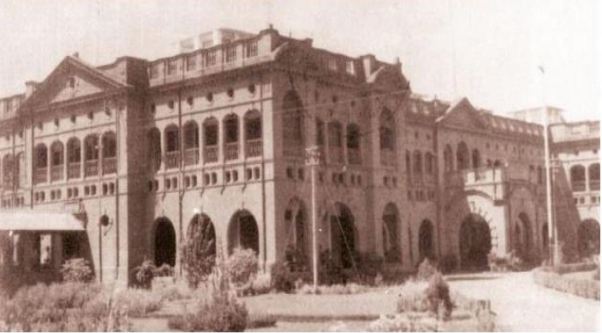Cuttack: The High Court of Orissa is all set to achieve an important milestone by completing the 75th year of existence on Wednesday, having played a significant role in delivery of justice.
The 75th anniversary celebrations of the Orissa High Court will be graced by President Droupadi Murmu. A number of programmes have been planned to celebrate the momentous occasion.
A close look at its evolution shows that the foundation of the institution was laid in 1916 with establishment of the Circuit Bench of Patna High Court at Cuttack. However, the Orissa High came into being as a separate entity on July 26, 1948.
A new chapter in India’s legal history was created when the British Parliament on August 6, 1861 passed the Indian High Courts Act. The law paved the way for establishment of High Courts in India. To begin with, three High Courts were set up in the erstwhile Calcutta, Bombay and Madras.

Earlier, Odisha was originally a part of the Bengal province during the colonial rule. On March 22, 1912, a new province of Bihar and Orissa was formed. However, it was the Calcutta High Court which exercised jurisdiction over the said new province.
However, it changed after the Patna High Court came into existence with effect from February 26, 1916. Eleven Judgeships (Districts) in Bihar and one in Orissa were subject to the jurisdiction of the Patna High Court.

Subsequently, a Circuit Court came into being at Cuttack. It was ordained in the Letters Patent that one or more judges of the Patna High Court would visit Orissa by way of circuit to deal with the cases there. As a result, the Patna High Court began sitting in circuit at Cuttack from May 18, 1916. An Advocate General for Odisha was appointed. The District and Sessions Judge of Cuttack functioned as the Registrar of Patna High Court in circuit.
Welcoming the Judges at the first sitting of the Circuit Court at Cuttack, President of Cuttack Bar Association, ‘Utkala Gourav’ Madhusudan Das, expressed the hope that a permanent bench would soon be established at Cuttack.
This practice continued till April 1, 1936 when the separate province of Orissa was formed. From then on, there were two District judges one at Berhampur exercising jurisdiction over Ganjam, Koraput and Puri and the other at Cuttack exercising Jurisdiction over Cuttack, Balasore and Sambalpur Districts.
Meanwhile, there was a growing demand for Orissa to have its own High Court with several representations being submitted to the government. The High Court Bar Association at Cuttack adopted a resolution in July, 1938 demanding a separate High Court for Orissa. By resolution dated August 15, 1942, the government of Orissa constituted a committee to examine a question of establishing a High Court for Orissa.
The Committee’s report was published on December 31, 1943. Consequent upon the government accepting the Committee’s recommendations the Governor of Orissa submitted an address to the Governor General of India on March 3, 1948 that a High Court, be constituted for the Province of Orissa.
On April 30, 1948, the Governor-General of India in exercise of the powers conferred by Section 229 (1) of the Government of India Act, 1935 issued the Orissa High Court Order, 1948 providing for constitution of the High Court for the Province of Orissa from July 5, 1948. Subsequently, by Orissa High Court (Amendment) Order 1948, the date of formation was changed to July 26, 1948. Its first Chief Justice was the illustrious Bira Kishore Ray.

Established with four judges, the Orissa High Court now has 21 judges, including the Chief Justice against a sanctioned strength of 33 Judges. Functioning of the court proceedings was shifted to a new seven-storey building adjacent to the old one, since January 2, 2014.

The High Court has also set up a number of new facilities including a Centre for Judicial Archives and Museum of Justice, apart from adopting new technologies in delivery of justice.



